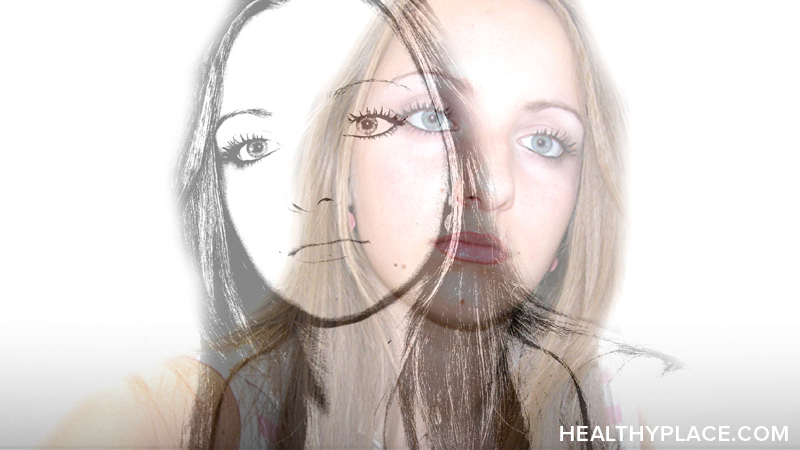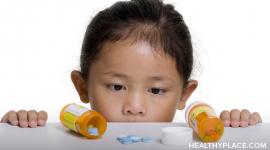Bipolar Disorder in Teenagers: Signs, Symptoms, Treatment

Bipolar disorder in teenagers is not clearly defined as only diagnostic criteria for adult bipolar disorder is set out in the current version of the Diagnostic and Statistical Manual of Mental Disorders. Moreover, the proposed next revision of the DSM still does not contain symptoms of teenage bipolar disorder.1
However, studies now show bipolar disorder type 1 manifests before age 20 in approximately 20% - 30% of cases and 20% of youths diagnosed with depression later go on to experience a manic episode.2
Symptoms of Bipolar in Teenagers
Early onset bipolar disorder is often defined as occurring before the age of 25. The younger the age of onset of bipolar disorder, the more likely it is to find a significant family history of the condition (read Causes of Bipolar Disorder).
Early onset bipolar disorder most commonly begins with depression and there may be many episodes of depression before the first hypomania. Depression with psychotic features may be a predictor of future full-blown bipolar disorder in the early onset group. Akiskal (1995) has argued that syndromal dysthymia with its onset in childhood, particularly in the presence of a family history of bipolar disorder, may herald a bipolar disorder.
Because the specific set of symptoms of bipolar in teenagers may be different than those in adults, teenage bipolar is commonly misdiagnosed as:
Risky Behaviors in Bipolar Disorder in Teens
Because symptoms of bipolar disorder include lack of judgment and risky behavior, when these manifest in bipolar teenagers, the results can be deadly. Teenagers may engage in the following types of risky behaviors:
- Frequent, unprotected sex
- Driving while intoxicated
- Substance abuse
- Poor diet, leading to obesity, high blood pressure and diabetes
- Lack of treatment plan compliance
Suicide is another huge concern in teenage bipolar. Suicide is the third leading cause of death between the ages of 15 - 25 in the general population and bipolar disorder increases this risk, but by how much is unknown. In teenage bipolar, males in their first years of treatment are most likely to commit suicide. Lithium drastically reduces the risk of suicide among adults and may reduce the risk of suicide in teenagers with bipolar disorder but specific study data is not available.
Extensive information on suicide thoughts, suicide attempts, and other suicide issues.
Treating Bipolar Disorder in Teenagers
Treatment for teenage bipolar is similar to that of adult bipolar disorder: medication, therapy and support (bipolar self-help and how to help a bipolar loved one). Medications used to treat adults are often helpful in stabilizing mood in teenagers with bipolar disorder. Most doctors start medication immediately upon diagnosis if both parents agree.
Early onset bipolar disorder is more commonly associated with a positive response to the mood stabilizer valproate and relative failure of response to lithium, not only because rapid cycling, mixed states and substance use are common in this group, but also because adolescents and young adults are less tolerant to the side effects of lithium.3
Other treatments, such as psychotherapy, may not be effective until mood stabilization occurs. In fact, stimulants and antidepressants given without a mood stabilizer (often the result of misdiagnosis) can cause havoc in bipolar disorder in teenagers, potentially inducing mania, more frequent cycling and increases in aggressive outbursts.
Treatment of bipolar disorder in teens is a trial-and-error process lasting weeks, months, or longer, as doctors try several medications alone and in combination to find the best treatment for the symptoms of teenage bipolar disorder. Two or more mood stabilizers, plus additional medications for symptoms that remain, are often necessary to achieve and maintain stability.
Medications for the Treatment of Bipolar Disorder in Teens
Few medications are FDA approved for the treatment of teenage bipolar disorder. Psychiatrists often use their knowledge of bipolar treatment in adults and apply it to adolescents. The following medications have Food and Drug Administration (FDA) approval for use of bipolar disorder in teens:2
- Lithium carbonate – often a first-line mood stabilizer and is effective in approximately 60-70% of adolescents and children with bipolar disorder. Approved in patients 12 years and older.
- Valproate / sodium divalproex / valproic acid (Depakote) – an anticonvulsant approved in patients 12 and older.
- Aripiprazole (Abilify) - an atypical antipsychotic approved for bipolar disorder in teens and children aged 10-17 years. It can be used alone or adjunctively with lithium or valproate.
- Risperidone (Risperdal) – an atypical antipsychotic approved for bipolar mania in children aged 10-17 years.
- Quetiapine (Seroquel, Seroquel XR) – an atypical antipsychotic approved for bipolar mania in children aged 10-17 years.
- Olanzapine (Zyprexa) – an atypical antipsychotic approved for use in those 13 and older with bipolar type 1.
See also Bipolar Disorder in Children: Signs, Symptoms, Treatment or Bipolar Depression in Teens: How Parents Can Help
APA Reference
Tracy, N.
(2021, December 28). Bipolar Disorder in Teenagers: Signs, Symptoms, Treatment, HealthyPlace. Retrieved
on 2024, November 2 from https://www.healthyplace.com/bipolar-disorder/bipolar-children/bipolar-disorder-in-teenagers-signs-symptoms-treatment


